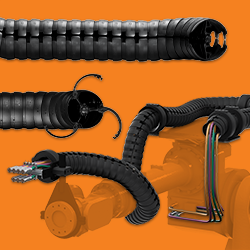The BotEyes Telepresence Robot
Remote operation using telepresence is the main application of this type of robots.
Remote operation using telepresence is the main application of this type of robots. Two scenarios are most demanded by the market:
- the employee, being at home or on a business trip, participates in the life of the company and works exactly as if he/she was in the office, among colleagues;
- the head of the company, which has several offices, performs the managements functions by communicating with the staff or other managers remotely, with the help of a robot.
The robots like this very useful for remote education (when the children is seek or has some disabilities) and for remote healing.
Research Laboratory of Design Automation presented to the market the new telepresence robot BotEyes.
It differs from other robots in the market today by the following.
As usual, the telepresence robots use fixed speed while moving. Some of them can change speed, but to do that, you need to stop the robot, change speed and go again. In contrast to this, BotEyes can change speed while moving. For this, you need simply to change the pointer position on the robot control circle.
The BotEyes telepresence robot can overcome doorsteps up to 0.6 inches (1.5 cm), see https://www.youtube.com/watch?v=G0Xk-dgHbs0&t=4s and there is no demand to go to step with two wheels simultaneously. This achieved thanks to using heavy non-spillable lead-acid batteries (like that in computer UPS), that placed at the very bottom of the robot. Another advantage of lead-acid batteries is they are safe and permitted for transportation by aircraft. As we know, the light lithium-ion and lithium-polymer batteries are dangerous goods (they simply ignite) and are prohibited for transportation by aircraft.
Our robot can use not only iPad, but almost any tablet with Android, iOS, MacOS, or Windows. This is achieved thanks to using a separate computer for robot mechanics control, that not connected to the tablet in the robot head. So, customer can use any communication tool he/she likes, like Skype, google hangout, Zoom, etc. But by default, there is used BotEyes own tool based on Google WebRTC working in WebRTC-compatible browsers (see https://boteyes.com/BrowserCompatibility.html).
Customers can choose any tablet. Why it is useful? The reason is the video resolution depends not on camera resolution only, as many people believe, but basically, on the processor power and tablet price that can differ from $200 to $2,000 and more. It is why we think that customer needs to choose the tablet by itself.
The tablet in the robot head can be installed in two ways: horizontally or vertically. It is very useful because if you control the robot by desktop computer, that has horizontally placed screen, the best position for the tablet in the robot head is horizontal because in this case camera aspect ratio correspond to monitor aspect ration. In another case, you will not able to see all the image that sees camera in tablet. If you use smartphone or tablet, that you hold vertically in your hands, then the vertical position of the tablet in the robot head would be the best.
Some telepresence robots use second camera to view the scene around the robot wheels. But this camera occupies a useful space on the screen. In contrast to this, we use tilting robot head and thanks to this you can see in the interlocutor's eyes directly or see the robot wheels. Robot head can be tilted 160 deg.
BotEyes is available for order worldwide today. A package including the robot and the charging dock is priced at $1,400 (U.S.). The robot can be ordered directly from BotEyes website or through our distributors.
About BotEyes Team
Research Laboratory of Design Automation is the creator of BotEyes - https://boteyes.com/AboutEng.html
Featured Product

igus® - Free heavy-duty plastic bearings sample box
The iglide® heavy-duty sample box provides a selection of five unique iglide bearings, each suitable for use in heavy-duty equipment due to their self-lubricating, dirt-resistant properties. Each bearing material boasts unique benefits and is best suited for different application conditions, though each can withstand surface pressures of at least 11,603 psi at 68°F.
